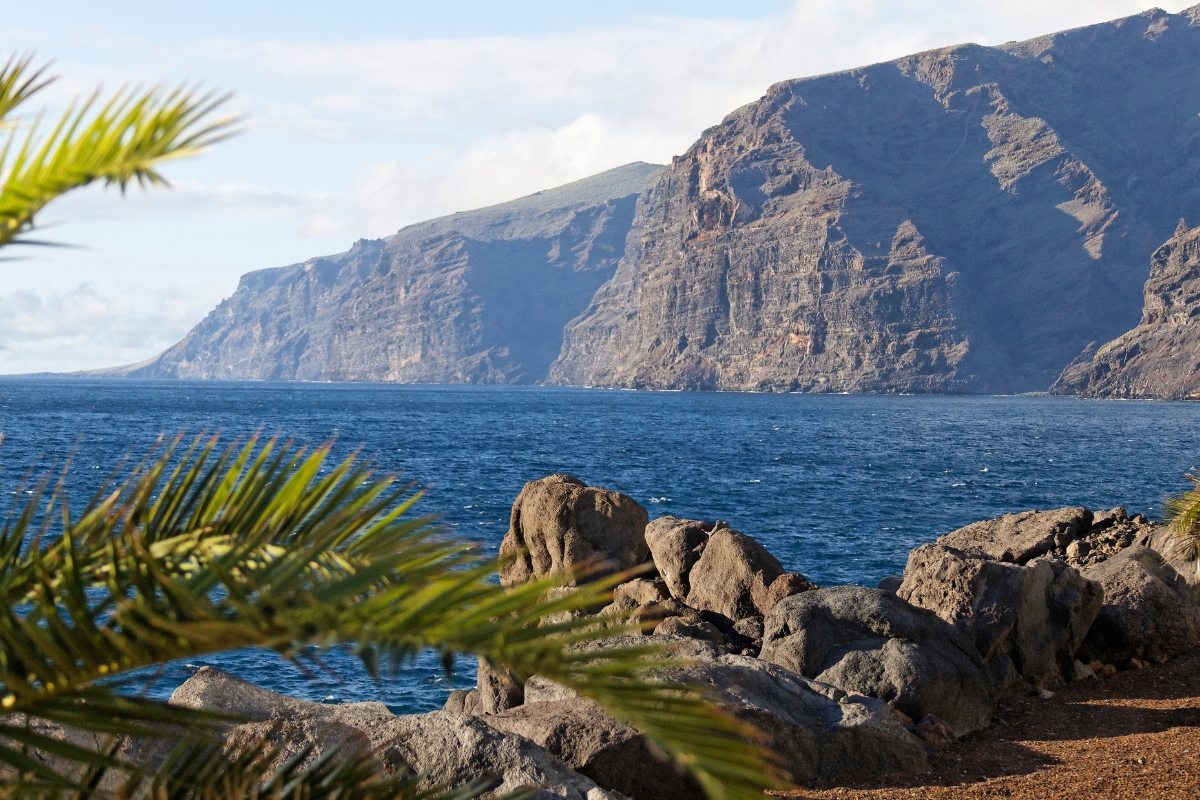Tenerife, the largest of Spain’s Canary Islands, is renowned for its year-round mild climate, dramatic volcanic landscapes, and diverse attractions that range from sandy beaches to lush forests and charming villages. Whether you’re wondering when to go to Tenerife for a sun-soaked beach vacation or to explore its unique natural wonders, this comprehensive guide will help you decide on the ideal month for your visit. We’ll explore Tenerife’s climate, tourist trends, cost considerations, local events, and practical tips so that you can determine the best time to visit Tenerife for an unforgettable experience.
1. Introduction
Tenerife offers a delightful mix of sun, sea, and culture. With its striking volcanic terrains, scenic coastal towns, and a variety of outdoor activities, the island is a favorite among travelers seeking both relaxation and adventure. However, many visitors ask, “what is the best month to visit Tenerife?” or “when to go to Tenerife” to make the most of the weather, avoid the crowds, and secure the best deals. This guide breaks down the seasonal variations and practical considerations, ensuring that you can plan your ideal getaway.
2. Understanding Tenerife’s Climate
General Weather Patterns
Tenerife boasts a subtropical climate that remains relatively mild throughout the year. The island experiences two distinct climatic zones:
- Coastal Areas: Enjoy warm temperatures, abundant sunshine, and gentle trade winds almost all year long, making it ideal for beach activities.
- Inland and Mountain Regions: These areas are cooler, especially during the winter months, and offer a refreshing contrast to the coast.
Seasonal Variations
- Summer (June to September):
Summers in Tenerife are hot and dry, with plenty of sunshine—ideal for water sports, sunbathing, and exploring the island’s natural beauty. This is a popular period, so many travelers wonder what the best time to visit Tenerife is for those looking for guaranteed beach weather. - Spring (April to May) and Autumn (October to November):
These shoulder seasons feature pleasant temperatures, fewer crowds, and lower prices. They are often considered by visitors as the optimal period for a more relaxed exploration of the island’s diverse landscapes. - Winter (December to March):
While still mild compared to mainland Europe, winter in Tenerife is cooler and occasionally rainier. However, it remains a great escape from colder climates and is particularly appealing to travelers seeking a winter sun getaway.
3. Monthly Weather Breakdown
Rainfall and Temperature Trends
- April to May (Spring):
The island bursts into bloom as temperatures range from 20°C to 26°C (68°F to 79°F). This season offers a mix of sun and light showers, making it an excellent time for hiking and sightseeing. - June to September (Summer):
Expect long, sunny days with temperatures typically between 25°C and 30°C (77°F to 86°F). This period is ideal for beach holidays, water sports, and outdoor dining. - October (Autumn):
Often regarded as the best month to visit Tenerife by many travelers, October provides warm weather, a comfortable sea temperature, and fewer tourists, making it perfect for those who want to experience the island without the summer crowds. - November to March (Winter):
Winter temperatures range from 15°C to 22°C (59°F to 72°F). Although there is a higher chance of sporadic rain, the mild weather is still suitable for exploring cultural sites and enjoying the local cuisine.
Impact on Outdoor Activities
- Beach and Water Sports:
The summer months and early autumn are ideal for swimming, snorkeling, and sailing due to the calm, warm waters. - Hiking and Sightseeing:
Spring and autumn provide comfortable temperatures and fewer crowds, perfect for exploring Tenerife’s national parks and historic towns. - Cultural and Culinary Tours:
Winter, with its mild weather, is also a good time to enjoy indoor attractions like museums, galleries, and traditional restaurants.
4. Tourist Seasonality and Trends
Monthly Tourist Numbers
- Peak Season (Summer):
The high demand from European tourists makes summer a bustling time on the island. Expect busy beaches, full resorts, and higher prices. - Shoulder Season (Spring and Early Autumn):
These periods are popular for those asking “when to go to Tenerife” if you prefer a quieter experience with still-ideal weather and more affordable rates. - Low Season (Winter):
Fewer visitors during the winter months mean that accommodations and attractions are less crowded, offering a more authentic and relaxed atmosphere at a lower cost.
Advantages and Disadvantages of Each Season
Peak Season:
- Advantages:
- Guaranteed warm, sunny weather perfect for beach vacations.
- A full array of activities and events available.
- Disadvantages:
- Higher prices and crowded tourist spots.
Shoulder Season:
- Advantages:
- Pleasant weather with fewer crowds and better deals on accommodations.
- Ideal for a balanced experience that combines sightseeing with relaxation.
- Disadvantages:
- Some days may be slightly unpredictable in terms of weather.
Low Season:
- Advantages:
- Lower costs and a more intimate travel experience.
- Opportunities to interact more closely with the local culture.
- Disadvantages:
- Cooler temperatures and occasional rain might limit outdoor activities.
5. Cost Considerations for Travelers
Accommodation Pricing Trends
Accommodations in Tenerife range from luxury resorts to budget-friendly hotels:
- Peak Season:
Expect higher rates due to high demand. Early booking is essential for securing the best deals. - Shoulder Season:
Prices are more competitive, and many hotels offer attractive packages that may include meals or tours. - Low Season:
This is the most cost-effective time to visit, with significantly lower prices for both hotels and flights.
Flight and Transport Costs
Airfare and local transport prices fluctuate with tourist demand:
- Peak Season:
Flights and transfers are more expensive. - Shoulder and Low Seasons:
Reduced demand often results in discounted fares and promotional packages.
Budgeting Tips
- Book in Advance:
Securing flights and accommodations early can lead to considerable savings. - Use Comparison Tools:
Online travel platforms and fare alerts are essential for finding the best deals. - Consider Package Deals:
All-inclusive packages may offer better value, especially during the shoulder or low seasons. - Stay Flexible:
Adjusting your travel dates by even a few days can often yield lower prices.
6. Other Essential Factors
Local Events and Cultural Experiences
Tenerife is rich in cultural offerings:
- Festivals:
Events like the Carnival of Santa Cruz de Tenerife and local music festivals provide a vibrant cultural backdrop. - Historical Sites:
Explore ancient Guanche heritage, colonial architecture, and world-class museums. - Culinary Tours:
Enjoy the island’s diverse cuisine—from fresh seafood to traditional Canarian dishes—by visiting local markets and restaurants.
Water Conditions for Beach and Water Sports
The island’s beaches and coastal waters are among its greatest assets:
- Summer and Early Autumn:
Warm, calm waters create ideal conditions for swimming, snorkeling, and water sports. - Spring and Winter:
Although slightly cooler, the waters remain inviting, and dry spells allow for plenty of beach time.
Special Offers and Packages
Watch for seasonal promotions that can enhance your travel experience:
- Discounted Rates:
Many resorts offer special rates during shoulder and low seasons. - Value-Added Packages:
Bundled deals including tours, meals, and transfers can provide excellent overall value. - Last-Minute Deals:
Flexibility with your travel dates might enable you to take advantage of attractive last-minute offers.
7. Comparative Analysis: Finding the Best Month
Choosing the best month to visit Tenerife depends on your personal preferences and travel goals:
- For Beach Lovers and Water Sports Enthusiasts:
The peak summer months (June to August) offer perfect beach conditions, though they come with higher prices and larger crowds. - For Cultural Explorers and Hikers:
Spring (April to May) and early autumn (September to October) are often considered the best time to visit Tenerife for a balanced experience with mild weather and fewer tourists. - For Budget Travelers:
Winter (November to March) provides significant savings and a more relaxed atmosphere, even if the weather is slightly cooler.
Many travelers often search for the best month to visit Tenerife and find that early autumn, particularly October, offers an excellent compromise between pleasant weather, affordable prices, and manageable tourist numbers.
8. Tips for a Successful Trip
Planning and Booking Strategies
- Book Early:
Secure your flights and accommodations well in advance, especially if you plan to visit during the busy summer months. - Use Comparison Tools:
Online travel agencies and fare alerts are your best friends when looking for deals. - Stay Flexible:
Adjust your travel dates if possible to capitalize on lower rates during shoulder or low seasons. - Gather Local Insights:
Engage with travel forums and local guides for up-to-date advice on the best spots and hidden gems in Tenerife.
What to Pack for Different Seasons
- Summer Essentials (June to August):
Bring light, breathable clothing, swimwear, sunglasses, a wide-brimmed hat, and high-SPF sunscreen. Don’t forget beach sandals and a cover-up for evenings. - Shoulder Season Essentials (April to May; September to October):
Include layers such as light jackets or cardigans for cooler mornings and evenings, along with comfortable walking shoes. - Winter Essentials (November to March):
Pack a mix of warm clothing and waterproof gear for occasional rain showers, especially in the evenings.
Insider Advice for Visitors
- Local Transportation:
Renting a car is a popular option for exploring Tenerife, though public buses and taxis are readily available. - Dining:
Sample the local cuisine by visiting both seaside restaurants and traditional Canarian eateries. - Cultural Etiquette:
The Canarian people are known for their warm hospitality. A friendly smile and willingness to engage with locals can greatly enhance your experience. - Health and Safety:
Tenerife is generally very safe for travelers, but always stay aware of your surroundings and ensure you have travel insurance.
9. Conclusion
Determining the best time to visit Tenerife ultimately depends on your travel priorities. Whether you’re asking, “when to go to Tenerife” for its ideal beach conditions, or looking for the best month to visit Tenerife for cultural and outdoor adventures, the island offers something for every traveler. The summer months provide vibrant beach life and warm seas, while spring and early autumn offer a perfect blend of pleasant weather, fewer crowds, and competitive prices. For budget-conscious visitors, the winter season provides a more intimate experience at lower costs.
By considering Tenerife’s climate, tourist trends, cost factors, and local cultural experiences, you can craft an itinerary that aligns with your ideal vacation. No matter when you choose to visit, Tenerife promises an unforgettable blend of natural beauty, cultural richness, and warm island hospitality.
10. Frequently Asked Questions (FAQ)
Q: When is the best time for beach activities and water sports in Tenerife?
A: The peak summer months (June to August) offer ideal conditions for swimming, snorkeling, and other water sports with abundant sunshine and warm seas.
Q: Are there significant price differences between seasons in Tenerife?
A: Yes. Peak season sees higher prices for flights and accommodations, while shoulder and low seasons offer more competitive rates and attractive deals.
Q: What kind of weather should I expect during the winter?
A: Winter (November to March) in Tenerife is mild with cooler temperatures and occasional rain showers, making it a good time for cultural exploration and enjoying quieter beaches.
Q: Are there local events or festivals that enhance the travel experience in Tenerife?
A: Absolutely. Tenerife hosts several events, including its famous Carnival and local music festivals, which provide insight into the island’s vibrant culture.
Q: Is Tenerife suitable for families and couples?
A: Yes. Families enjoy the summer for its beach and water activities, while couples appreciate the romantic ambiance of quieter shoulder seasons. Budget travelers will find the winter months particularly appealing.

